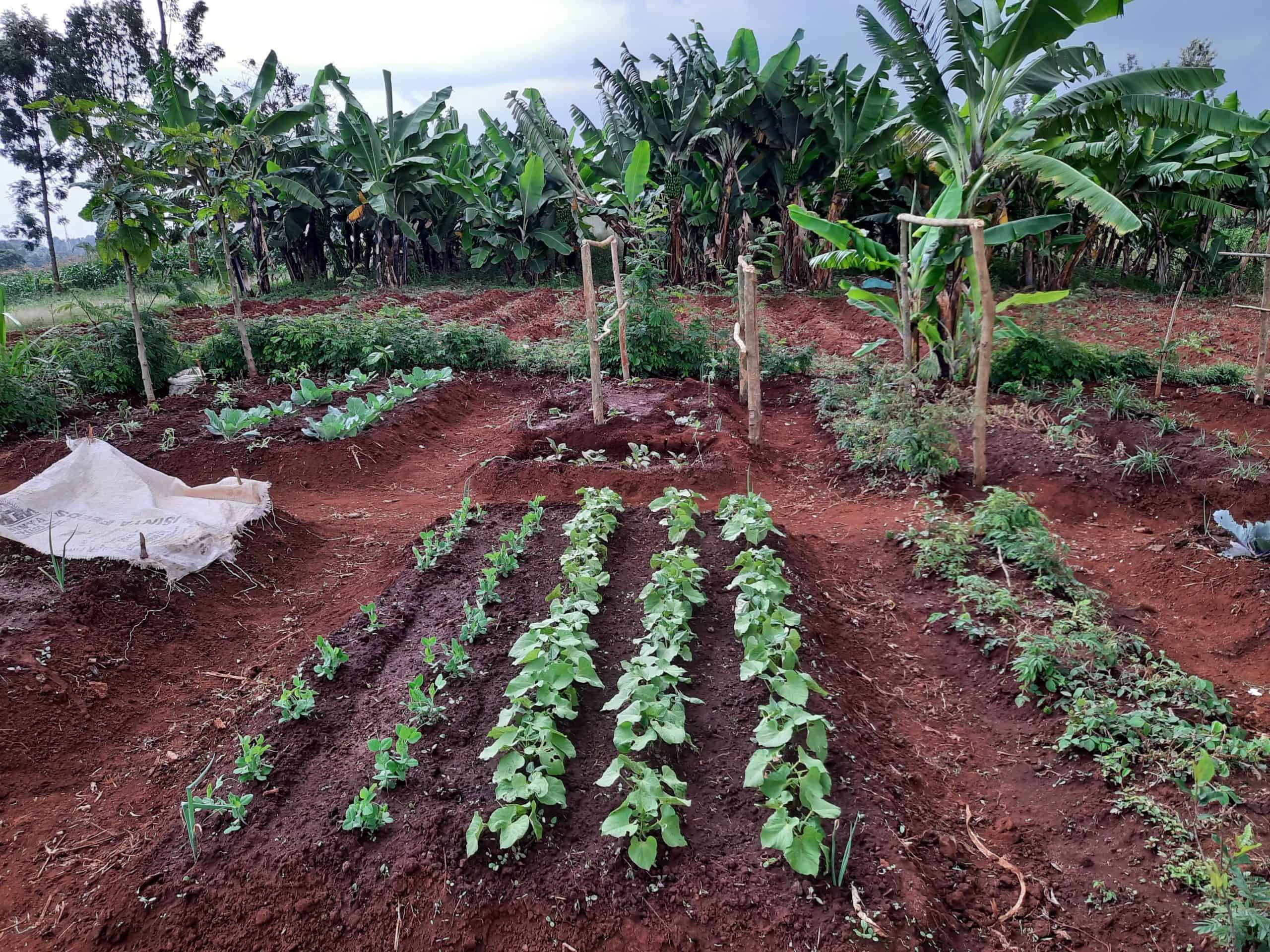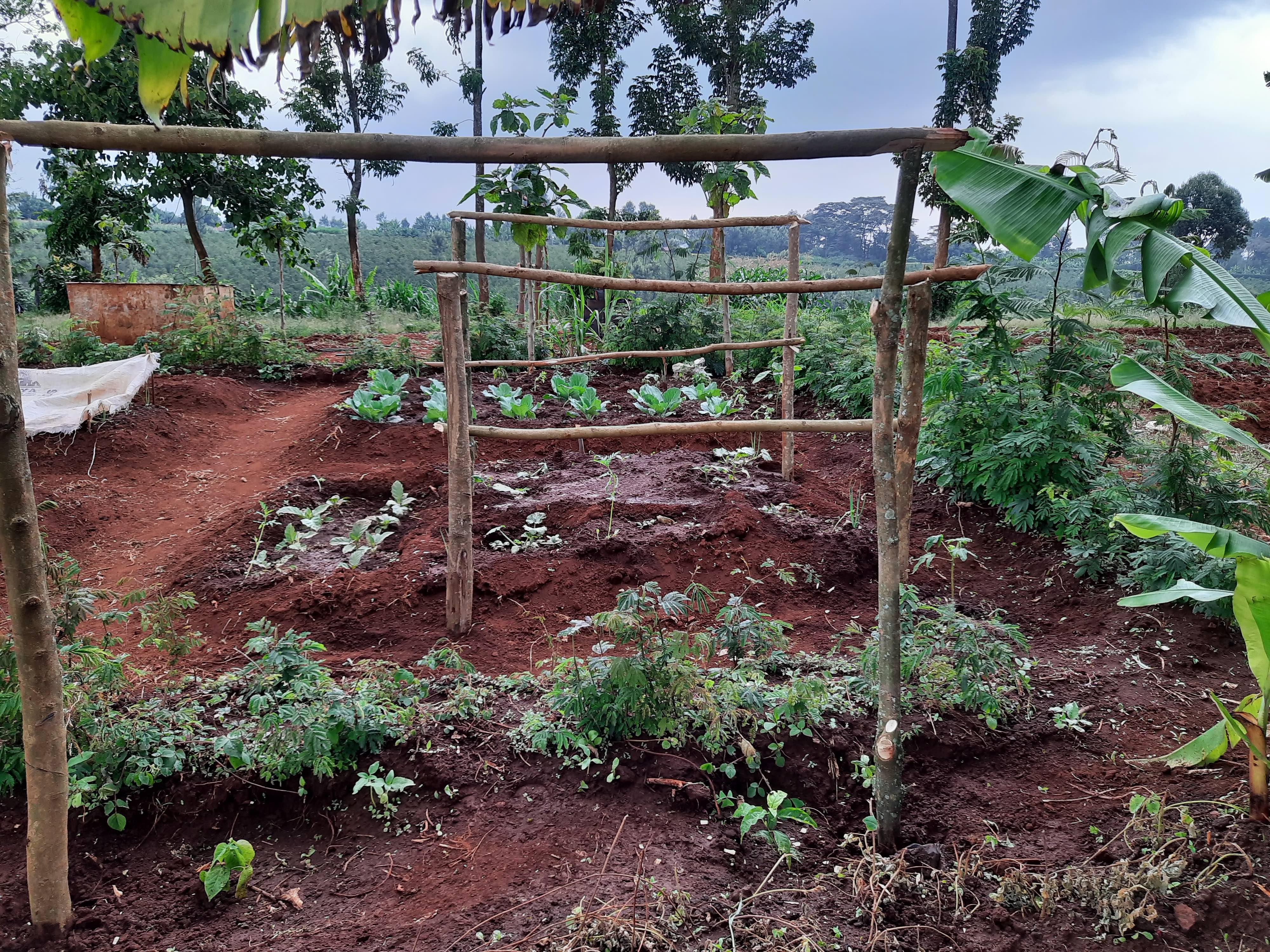
“Forest Gardens like this one provide for both the land and the farmer,” says Trees for the Future East Africa Training Coordinator Peter Kingori. “The modern approach to growing food destroys landscapes, making it increasingly harder to grow food each season. Given the right knowledge and resources, farmers can restore degraded land and sustainably support their families and communities for years to come.”
Agroforestry training organization Trees for the Future works with farmers in Kenya and across sub-Saharan Africa to overcome these challenges through a sustainable farming technique called the Forest Garden Approach. Local staff like Kingori work closely with farmers, training and guiding them to protect their land with trees and diversify what they grow, improving income and food access.
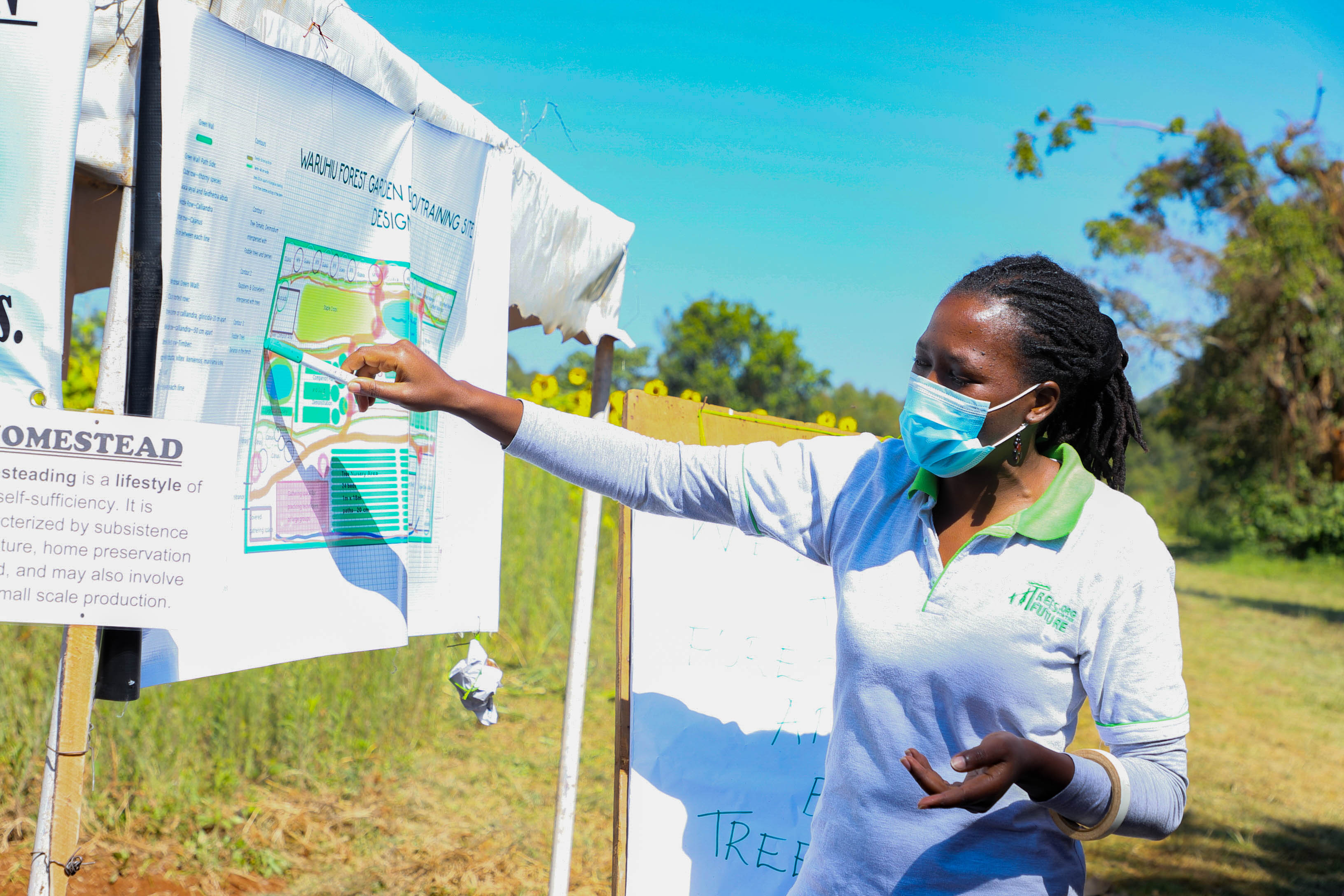
Trees for the Future Demonstration and Training Sites
Since 1989, Trees for the Future has helped more than 300,000 people and planted more than 225 million trees around the world. In 2019, the organization began establishing demonstration Forest Gardens in partnership with local organizations.
“Farmers in our program establish their Forest Gardens on their own land,” explains Kingori. “Public, centrally-located Forest Garden demonstration sites give us the opportunity to train staff, partners, and regional leaders, while continuing to train farmers on their own farms.”
The Waruhiu Demonstration and Training Site is managed by Kingori and Site Trainer Maryanne Kamau.
What is there to see at the Waruhiu Demonstration Site?
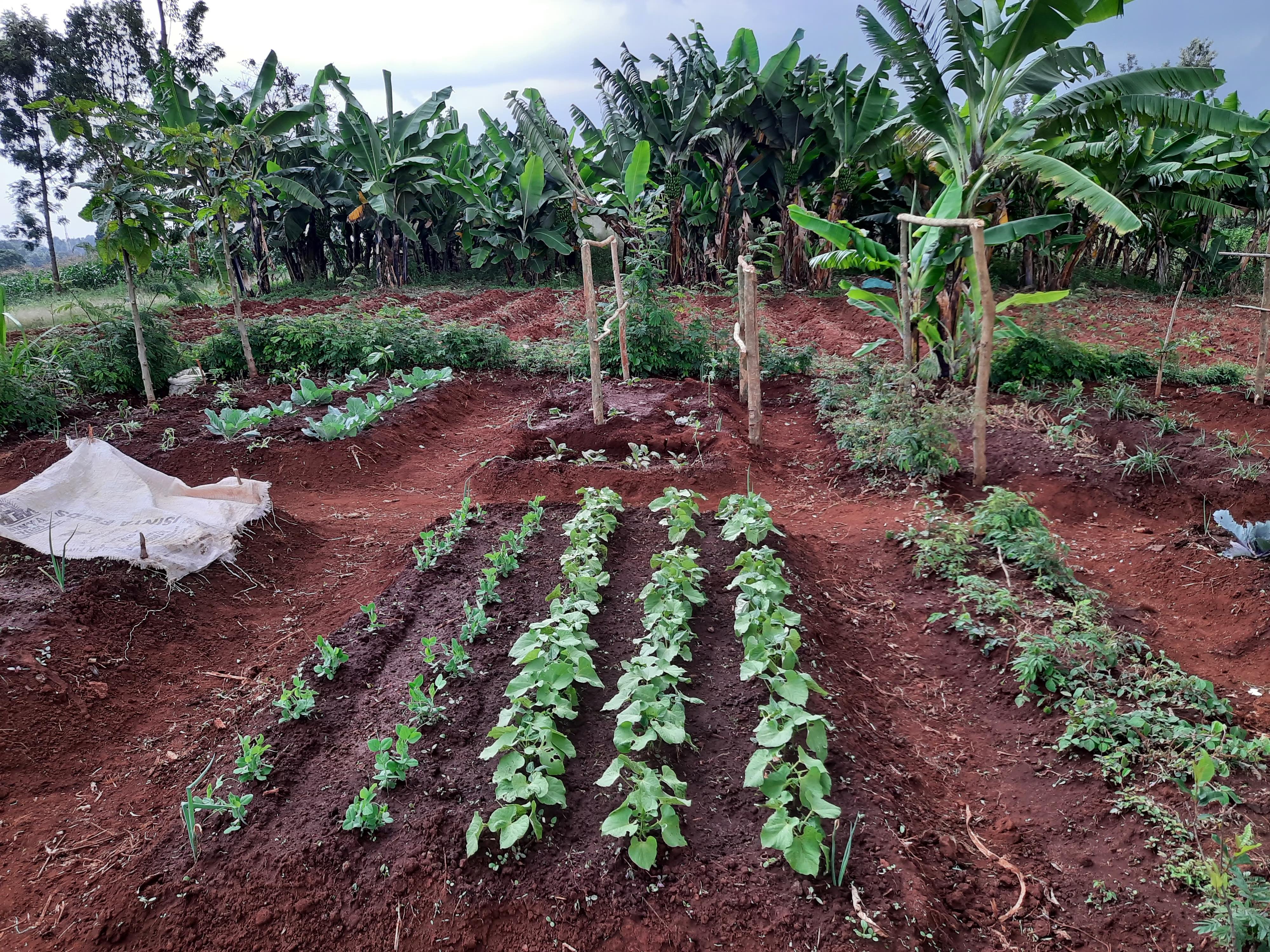
The site is roughly one acre in size, located on a steep slope at the Waruhiu Agricultural Training Centre. It is home to dozens of species and showcases sustainable farming techniques at every turn. Thousands of seedlings grow in an on-site nursery, which will be planted in nearby TREES Forest Garden projects. A diverse mix of fruit trees and indigenous vegetables are also growing in the permagarden and throughout the site.
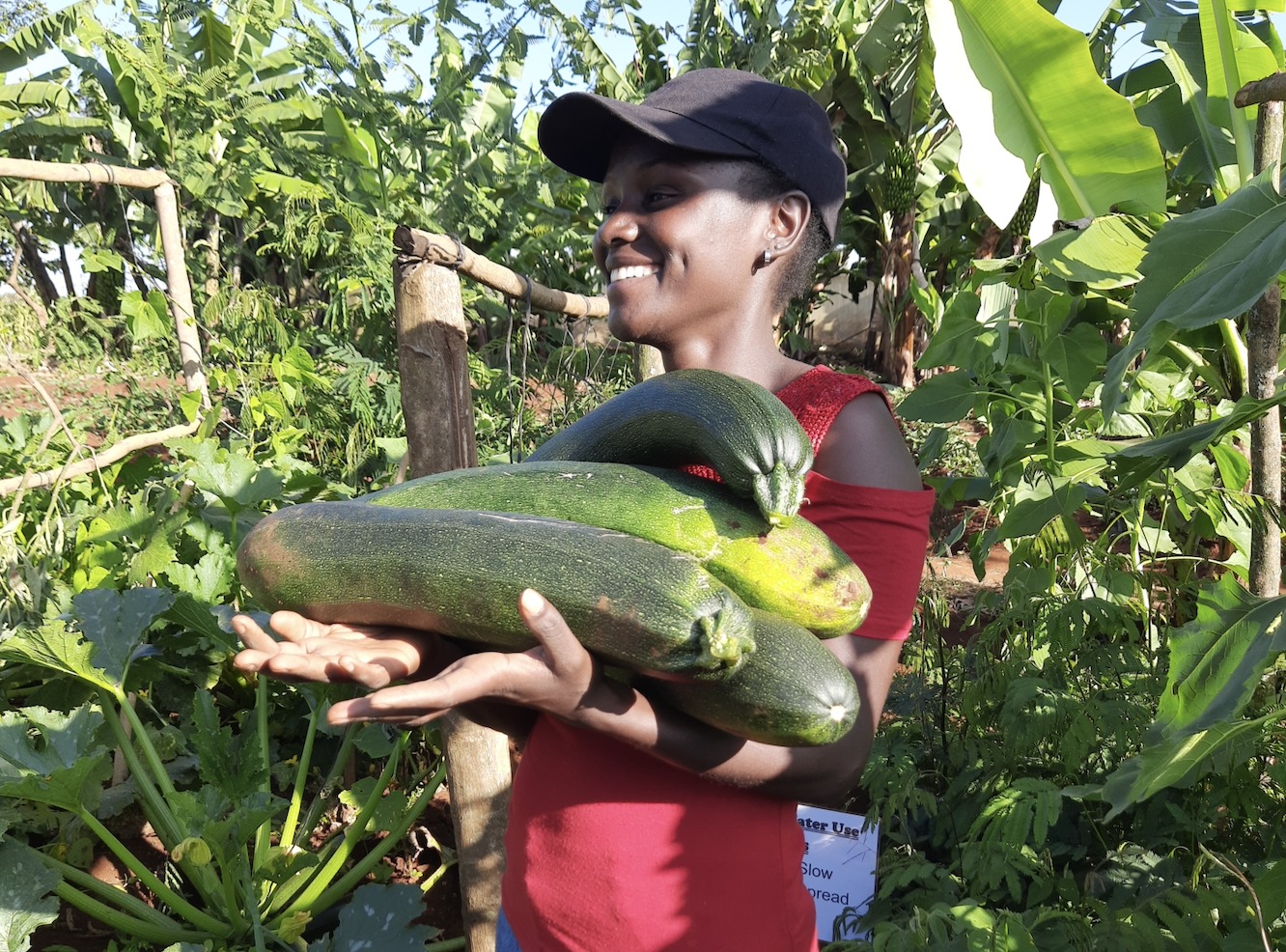
A fledgling living fence and three contours are already working to protect the soil and plant life. The living fence and contours use different trees and techniques, so farmers can explore the different options that may be relevant to their needs and land.
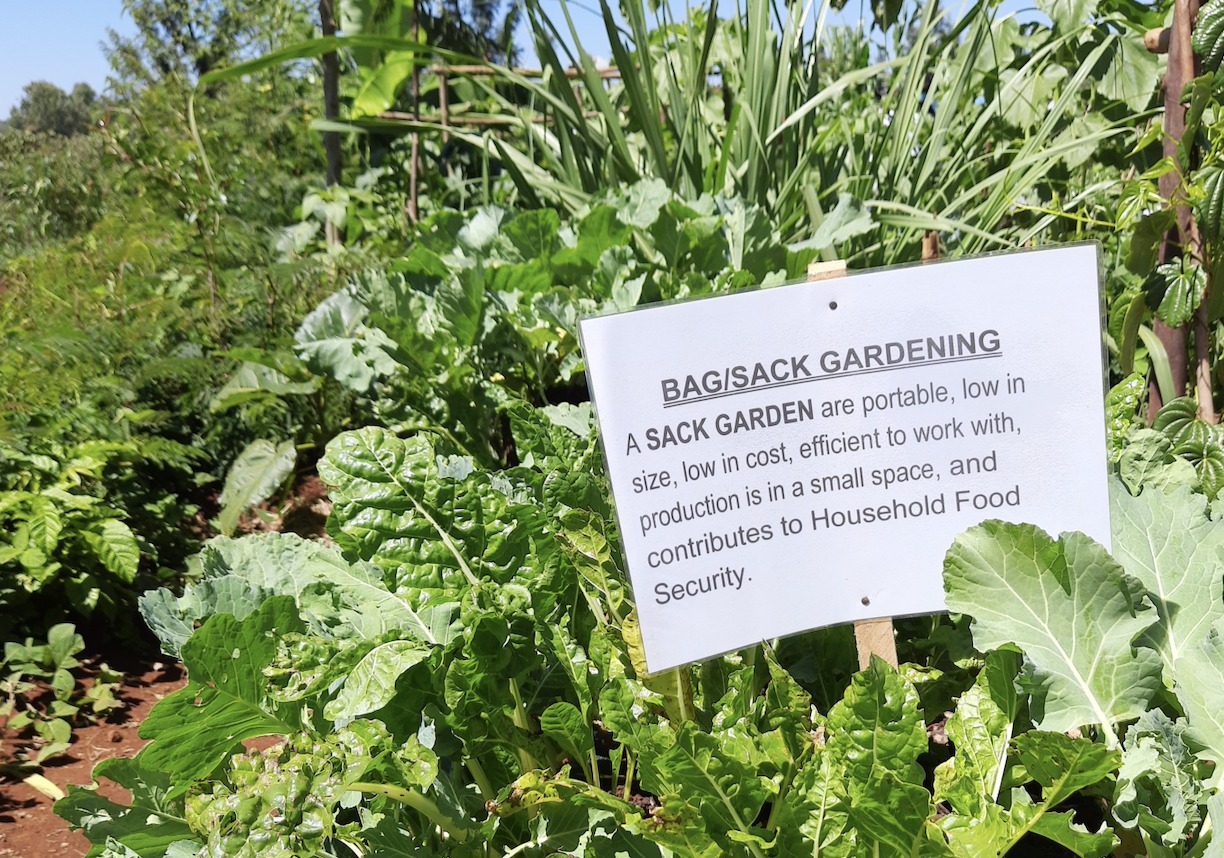
A “soil lab” area is being developed where traditional compost piles and worm composting provide nutrient-rich soil amendments. The team is also using a water catchment system to sustainably water seedlings and crops. Water is diverted from nearby roofs to storage cisterns on the site and used during drier periods of the year.
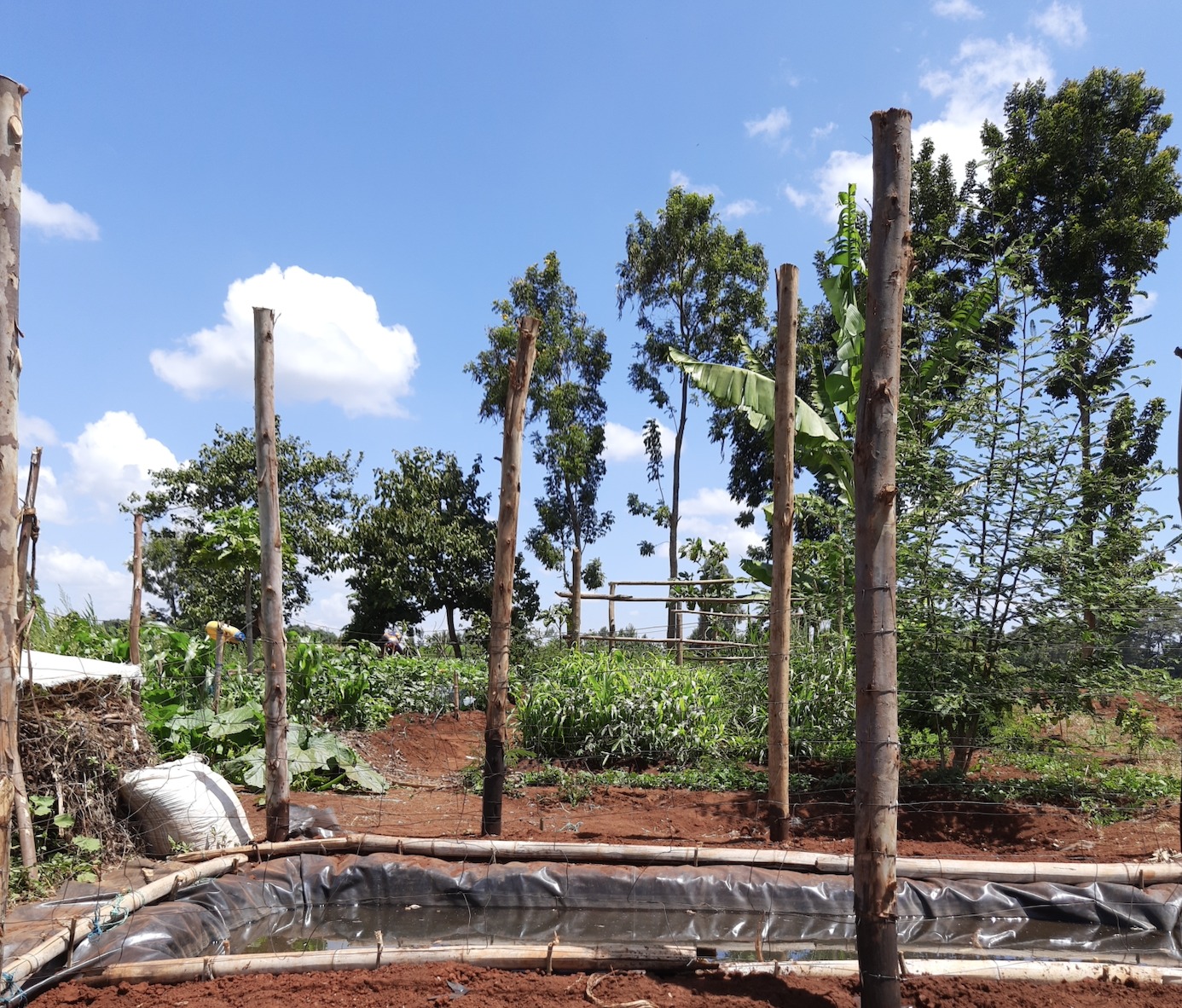
On this small piece of land, Kingori and Trees for the Future staff are showing the impact sustainable farming can have on people and the planet… and industry leaders are taking notice.
“It’s evident that the Forest Garden is an approach that increases agricultural productivity within our farming communities,” said Ministry of Livestock Officer James Kiarie on a visit to the demonstration site. “It has a direct bearing on improved food security, poverty alleviation, and environmental conservation in this county.”
Trees for the Future staff are currently managing five demonstration sites across sub-Saharan Africa. Each site is different, showcasing species and techniques appropriate to the region, but they all have the same goal: proving the power of agroforestry and the Forest Garden Approach.
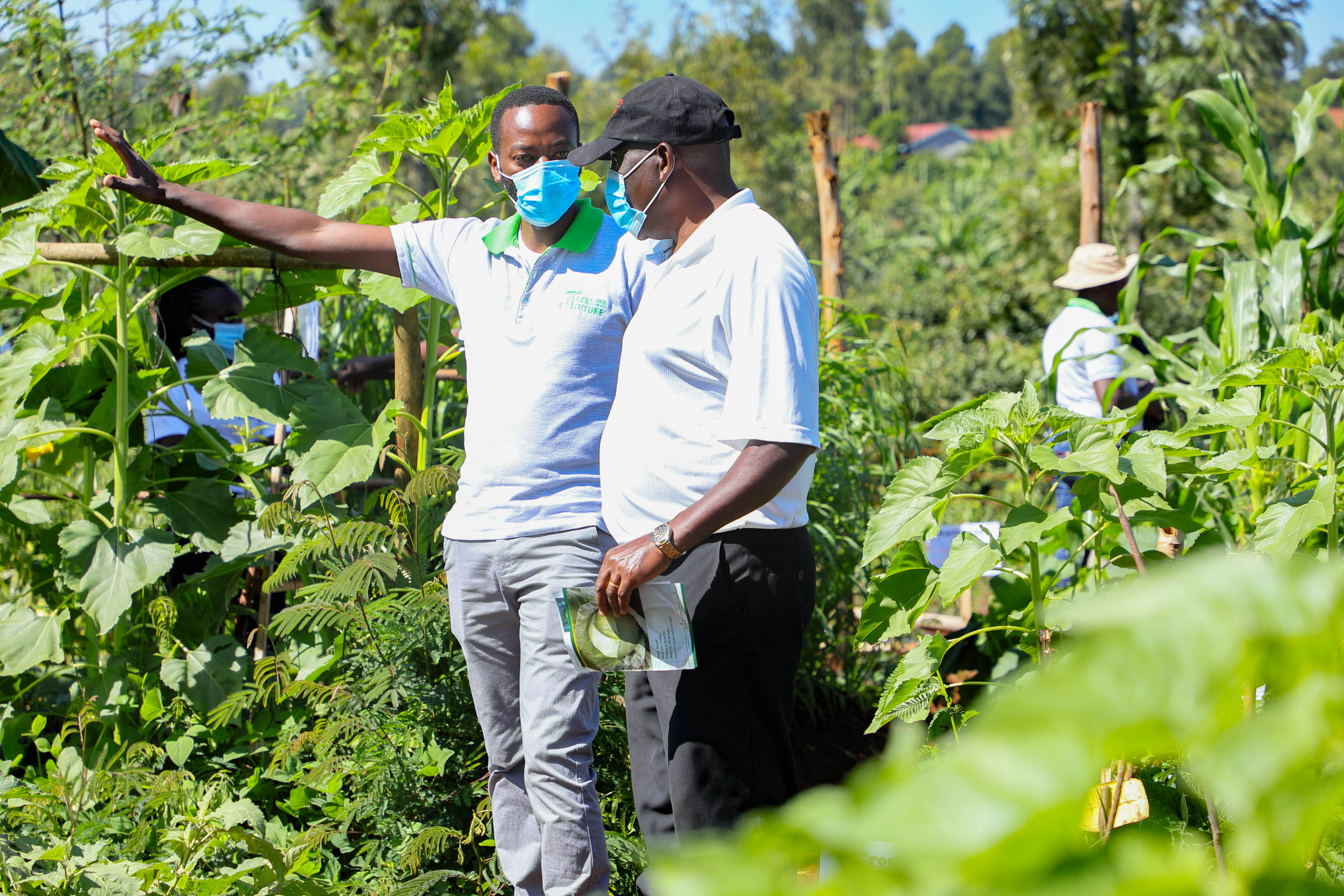
Trees for the Future staff host members of the public in line with COVID safety precautions. Learn more about the training sites here.
